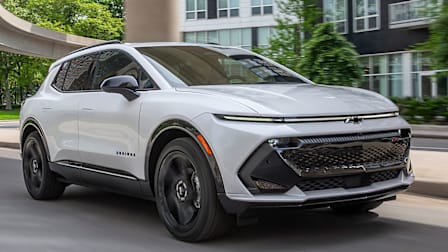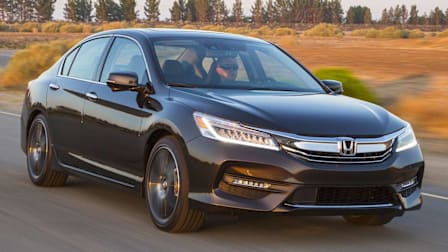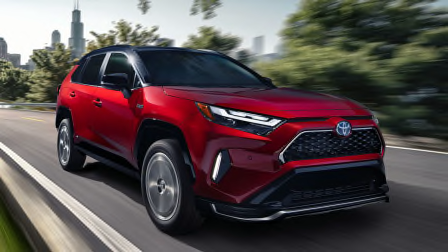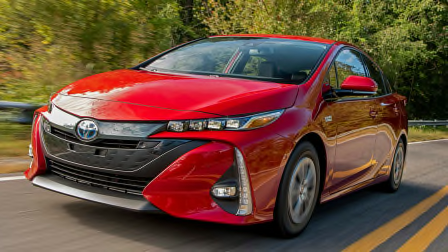How Much Do Cold Temperatures Affect an Electric Vehicle’s Driving Range?
Here's the cold, hard truth about winter’s effect on EV batteries and charging
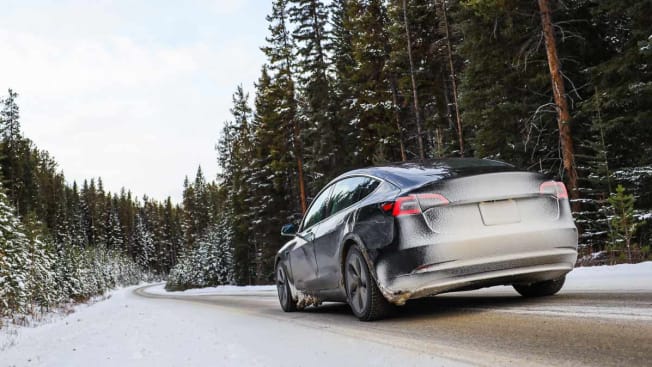
With a proliferation of electric vehicle choices, more Americans are considering purchasing an EV. However, challenges with winter charging and range may be cooling interest for some consumers in the snowbelt.
There are several reasons driving range goes down in cold weather, starting with the impact on battery chemistry when the vehicle is parked. Cold temperatures can slow down the chemical reaction inside the battery, which allows it to create power. Supplying cabin heat is a major draw, and there’s the impact of maintaining battery temperature.
How to Combat the Cold
You can’t change the weather, but you can make a few choices in how you use your EV to reduce the impact of cold on its range.
“Maximizing an EV’s range in cold weather requires new processes—and some extra attention to manage the temperature of the cabin and battery—that are different compared with a regular gas car,” says Alex Knizek, Consumer Reports’ manager of auto testing and insights.
Our experts further advise to precondition the cabin/battery when connected to the charger rather than drain the battery to perform these functions. To make this convenient, most cars let you set a departure schedule, either through the vehicle’s infotainment screen or through a mobile app. If you tell the car you plan to leave at 9 a.m., it will automatically heat itself up beforehand. For nonroutine trips, you could have the car preheat before getting inside.

Photo: Alex Knizek/Consumer Reports Photo: Alex Knizek/Consumer Reports
Preconditioning Test
To see how effective this process can be, we tested the scheduled departure feature on three all-wheel drive EVs: The 2024 Kia EV9 Wind, 2024 Acura ZDX A-Spec, and 2024 Tesla Model 3 Long Range. On two nearly identical single-digit days in January 2025, we drove these vehicles on a 100-mile highway loop and recorded the difference in efficiency, remaining battery charge, and projected miles of range according to the vehicles’ trip meters. We did this both with and without utilizing the scheduled departure setting, which warmed the cabin to 72° F while still connected to the charger. This kept the batteries charged to 100 percent before we set off.
The EV9 and ZDX displayed a 5 and 6 percent increase in efficiency and an additional 3 and 4 percent in battery charge, respectively, when using the scheduled departure trick. Similarly, the Model 3 saw a 7 percent increase in efficiency and ended with a 4 percent higher battery charge. The EV9 mysteriously showed a lower range prediction at the end of the drive loop, despite being more efficient when preconditioned, but the ZDX and Model 3 predicted an additional 16 and 10 miles of range, respectively, validating this technique.
“The differences may not seem drastic in this case, but this is typically a ‘set it and forget it’ type feature in most EVs with little to no drawbacks,” says Knizek. “Plus, you start your drive with a toasty cabin!”
Outside temperature, vehicle speed, and the duration of the trip will impact your results. The preconditioning feature will also be useful in hot summer months. The data from our experiment:
| Kia EV9 Wind AWD | Acura ZDX A-Spec AWD | Tesla Model 3 Long Range AWD | |
| Efficiency according to trip meter (mi/kWh) | 2.0/ 2.1 | 1.6/ 1.7 | 2.7/ 2.9 |
| Ending SOC (%) | 50/ 53 | 47/ 51 | 46/ 50 |
| Remaining range according to trip meter (miles) | 116/ 110* | 118/ 134 | 156/ 166 |
Key takeaway: Preconditioning provided more range in the ZDX and Model 3. Although it didn’t display more range, the EV9 also benefited from this strategy.

Photo: Alex Knizek/Consumer Reports Photo: Alex Knizek/Consumer Reports
Climate vs. Heated Seat Test
Another energy-saving tip: Lower the cabin temperature, relying more on your heated steering wheel and seats for warmth (68º F instead of 75º F, for example), while remaining comfortable enough to drive safely.
You may be tempted to take this to the extreme by shutting the climate system off entirely, as we have observed in CR’s surveys of EV owners, to save as much range as possible. We tested this method in freezing temperatures (between 23 F and 31 F) using three different EVs: A 2023 Nissan Ariya Platinum+ AWD, 2023 Lexus RZ 450e Premium, and 2022 Kia EV6 Wind AWD. We recorded the difference in efficiency and remaining battery charge according to the car, along with the energy required to recharge each car to 100 percent. The latter indicates the total energy required for the trip, including losses during the recharge process that all EVs are subject to.
For the first trial, we set the automatic climate control systems to 72 F. For trial two, the climate system was shut off and only the heated seats and steering wheel were used. We drove a 130-mile round trip mostly on the highway. The cars displayed between 7 and 8 percent higher efficiency with the climate system off, which is notable.
Despite the improvement in efficiency and range, all test drivers commented how uncomfortably cold the interior of the car was, and how if it weren’t in the name of science, they would have turned the climate system back on and accepted the range hit. Although it could be worth it in an emergency situation, we don’t recommend going to this extreme to save some miles of range.
The data from our experiment:
| Nissan Ariya Platinum+ AWD | Lexus RZ 450e Premium | Kia EV6 Wind AWD | |
| Efficiency according to trip meter (mi/kWh) | 2.7/2.9 | 2.4/2.6 | 2.8 / 3.0 |
| Ending SOC (%) | 41/44 | 12/26 | 40 / 44 |
| Remaining range according to trip meter (miles) | 90/100 | 17 / 43 | 91 / 99 |
| Energy required to fully recharge, including losses (kWh) | 56.2/54.3 | 54.1 / 48.0 | 52.4 / 49.0 |
Key takeaway: Keeping a lower cabin temperature and relying on heated seats for comfort does add range. But the nominal benefit isn’t worth the compromise.
When on a road trip or planning to use a DC fast charger, precondition the battery beforehand. This process takes energy from the battery to heat itself up or cool itself down to the optimum temperature for quicker, more efficient charging. It “costs” driving range to do this, but the trade-off is generally worth it. Drivers can usually do this by entering a DC fast charger into the vehicle’s navigation system. Some cars have a button to manually trigger the process. Be aware that it can take half an hour or longer depending on the outside temperature and internal battery temperature, so plan accordingly.
If you think the climate where you live might be too harsh for an EV, consider a plug-in hybrid. You’ll have the advantage of electric power around town and for short commutes but still have the safety net of an internal combustion engine for longer trips and extreme temperatures.
CR Tests Show How Temperature Affects EV Range
Learn more about our four-season tests of electric vehicles.

















